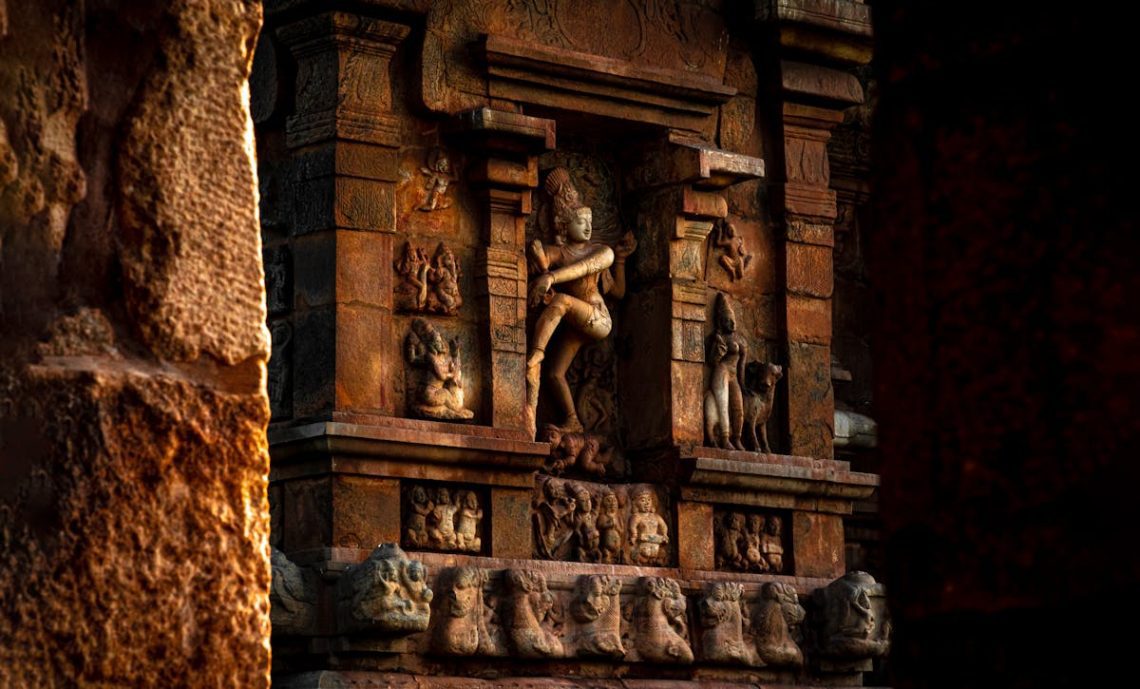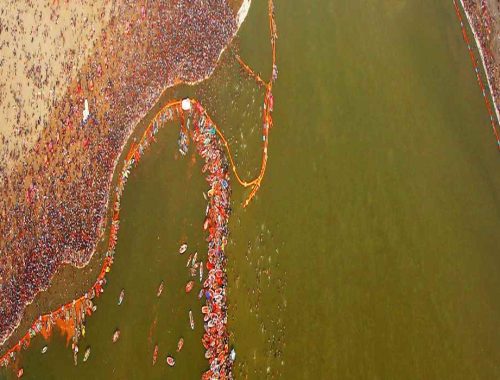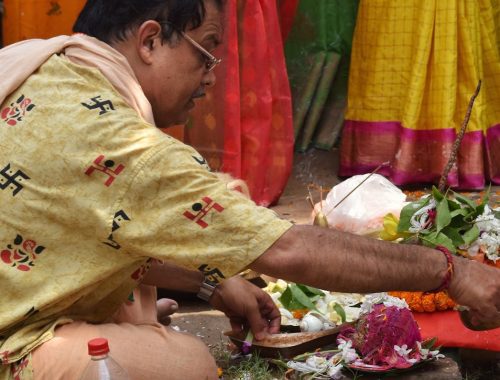
BREAKING: Tamil Nadu Seeks ASI Approval to Excavate Seven Ancient Sites from Sangam and Chola Eras
The Tamil Nadu State Department of Archaeology has submitted proposals to the Archaeological Survey of India (ASI) for permission to excavate seven historically significant sites across the state. These proposed excavations could reveal important information about the Sangam period and the powerful Chola dynasty that dominated South India for centuries.
In this article, we will cover the details of these seven proposed excavation sites, what researchers expect to find, the international collaboration involved, and how these discoveries could change our understanding of ancient Tamil Nadu’s role in global trade networks.
The Seven Proposed Excavation Sites
The Tamil Nadu government has identified seven locations with significant archaeological potential:
Buddhist Vihara at Nagapattinam
- Historical importance: Major Buddhist center during Chola period
- Key feature: Famous Chudamani Vihara built in 1006 CE
- International connection: Built through collaboration between Srivijayan king and Rajaraja Chola I
- Expected discoveries: Buddhist artifacts, architectural remains, trade goods
Glass Bead-Making Center in Cuddalore
- Time period: Sangam era (over 2,000 years old)
- Significance: Advanced glass manufacturing industry
- Trade connections: Beads exported across Indo-Pacific region
- Research potential: Ancient manufacturing techniques and technology transfer
Roman Coin Sites in Coimbatore and Tenkasi
- Discovery: Roman gold coins found at both locations
- Historical evidence: Direct trade between Tamil Nadu and Roman Empire
- Trade goods: Spices, precious stones, textiles exchanged for gold
- Global significance: Proof of ancient Indian participation in world economy
Iron Age Sites Near Salem and Tirukoyilur
Adichanur near Tirukoyilur:
- Bronze Age to Iron Age transition evidence
- Metalworking technology development
- Settlement pattern information
Thelunganur near Salem:
- Iron smelting furnaces
- Tool manufacturing evidence
- Community organization insights
Also Read: New Discoveries in Tamil Nadu’s Iron Age History: Found Dating Back to 3345 BCE
Conch Shell Workshop in Tuticorin
- Location: Pattinamarudur in Tuticorin district
- Industry: Specialized conch shell ornament production
- Market: Religious and decorative items for pan-Indian trade
- Craftsmanship: Advanced shell-working techniques
International Research Collaboration
Partnership Details:
- Lead: Tamil Nadu State Department of Archaeology
- International partner: Field Museum, Chicago
- Technical partner: IIT Gandhinagar
- Focus area: Glass bead analysis and Indo-Pacific trade connections
Why This Collaboration Matters:
- Advanced research methods: Latest scientific dating and analysis
- Comparative studies: Access to international artifact collections
- Global perspective: Understanding Tamil Nadu’s role in world trade
- Knowledge sharing: Best practices from international excavations
Historical Significance of These Discoveries
Maritime Trade Networks
These sites prove Tamil Nadu was a major player in ancient global trade:
- Buddhist connections: Links with Southeast Asian Buddhist kingdoms
- Roman trade: Direct economic relationships with Mediterranean world
- Manufacturing exports: High-quality goods produced for international markets
- Cultural exchange: Ideas and technologies flowing both directions
Technological Advancement Evidence
The proposed sites showcase ancient Tamil technological sophistication:
Glass Manufacturing:
- Precise temperature control (requires 1000°C+ furnaces)
- Chemical knowledge for different glass colors
- Mass production techniques
- Quality control systems
Metalworking Innovation:
- Iron smelting technology adoption
- Tool and weapon manufacturing
- Agricultural implement production
- Decorative metalwork skills
Religious and Cultural Diversity
Nagapattinam’s unique position:
- Buddhism coexisted with Hinduism
- International religious exchanges
- Architectural fusion styles
- Multi-cultural port city dynamics
Expected Timeline and Archaeological Process
ASI Approval Process:
- Proposal review (2-3 months)
- Site assessment (1-2 months)
- Permission granted (if approved)
- Excavation planning (3-4 months)
Excavation Phases:
Phase 1: Surface survey and mapping Phase 2: Test trenches and sampling Phase 3: Major excavation work Phase 4: Artifact analysis and documentation
International Analysis:
- Field Museum Chicago: Glass bead comparison with global collections
- IIT Gandhinagar: Scientific dating and chemical analysis
- Joint publications: Research findings shared globally
Potential Game-Changing Discoveries
What Archaeologists Hope to Find:
At Buddhist Vihara Sites:
- Inscriptions in multiple languages
- Buddhist sculptures and architectural elements
- International coins and trade goods
- Evidence of religious ceremonies and practices
At Glass Bead Centers:
- Ancient furnaces and production equipment
- Raw materials and finished products
- Trade route evidence
- Technological innovation documentation
At Roman Coin Sites:
- More Roman artifacts beyond coins
- Indian goods prepared for Roman export
- Evidence of Roman merchant presence
- Trade agreement documentation
At Manufacturing Sites:
- Complete production sequences
- Worker living areas
- Tool and equipment evolution
- Export packaging and shipping evidence
Impact on Understanding Indian History
Rewriting Ancient Economic History:
These discoveries could prove that ancient India was not just a source of raw materials but a sophisticated manufacturing center producing high-value goods for international markets.
Cultural Exchange Documentation:
Evidence of how Tamil culture influenced and was influenced by contact with Buddhist Southeast Asia, Roman Mediterranean, and other civilizations.
Technological Innovation Recognition:
Proof that many technologies considered “foreign imports” were actually developed or significantly advanced in ancient Tamil Nadu.
Challenges and Solutions
Site Preservation Issues:
- Problem: Modern development covering ancient sites
- Solution: Advanced ground-penetrating radar to locate intact areas
- Strategy: Working with local governments for site protection
Funding Requirements:
- Challenge: Multi-year projects need sustained funding
- Approach: International collaboration sharing costs
- Benefits: Shared expertise reduces overall expenses
Environmental Factors:
- Monsoon impact: Limited excavation seasons
- Heat challenges: Working conditions in Tamil Nadu climate
- Solution: Flexible scheduling and proper equipment
Tourism and Economic Benefits
Heritage Tourism Development:
- Site museums: Displaying discoveries at excavation locations
- Tourist circuits: Connecting multiple archaeological sites
- Educational tours: School and college group visits
- International visitors: Attracting global heritage tourists
Economic Impact:
- Job creation: Archaeologists, guides, museum staff
- Local business: Hotels, restaurants, transport services
- Craft revival: Traditional skills demonstrated and sold
- Investment attraction: Heritage-based development projects
Archaeological Technology Integration
Modern Methods Being Used:
- 3D scanning: Complete site documentation
- Drone mapping: Aerial site surveys
- Chemical analysis: Artifact composition studies
- Digital reconstruction: Virtual reality site experiences
Data Management:
- Digital catalogs: Complete artifact databases
- Online access: Research sharing platforms
- Public engagement: Virtual museum experiences
- Educational resources: School curriculum integration
Future Research Expansion
Additional Site Identification:
- Satellite archaeology: Identifying more potential sites
- Community involvement: Local knowledge incorporation
- Regional surveys: Systematic archaeological mapping
- Underwater exploration: Coastal and river site investigation
Academic Development:
- University programs: Expanded archaeology education
- Research centers: Specialized Tamil archaeology institutes
- Student training: Hands-on excavation experience
- International exchanges: Study abroad programs
Global Archaeological Significance
International Recognition:
These excavations position Tamil Nadu archaeology on the global stage alongside major archaeological projects worldwide.
Research Contributions:
- Trade network studies: How ancient globalization functioned
- Technology transfer: How innovations spread across cultures
- Urban development: How ancient cities grew and evolved
- Cultural interaction: How civilizations influenced each other
Takeaway
The Tamil Nadu government’s proposal for these seven archaeological excavations represents a major step forward in understanding South India’s historical importance. The combination of local expertise, international collaboration, and advanced technology provides the best opportunity for discoveries that could reshape our understanding of ancient Tamil civilization.
These sites have the potential to prove that Tamil Nadu was not just a regional power but a crucial participant in ancient global trade networks, technological innovation, and cultural exchange. The evidence they contain may help establish Tamil Nadu’s rightful place in world history.
As the ASI considers these proposals, the archaeological community and Tamil people eagerly await the potential discoveries that could emerge from these carefully selected sites.
Khushi Jha
I am Khushi Jha, a proud alumna of Delhi University with a degree in History and Political Science. My fascination with the events that have shaped our world drives me every day. Currently, I am pursuing my Master’s in History, diving even deeper into global dynamics and the incredible heritage of India. I firmly believe that India's rich heritage deserves wider recognition. I strive to bring its stories to the forefront, ensuring they are celebrated and acknowledged on a global stage. I have written extensively across various niches, including fashion, health, lifestyle, real estate, hospitality, amongst others. In my free time, you’ll find me immersed in books, both fiction and non-fiction, or simply enjoying some much-needed rest.
You May Also Like

Culture Ministry to Showcase India’s Heritage at Maha Kumbh with ‘Kalagram’
January 22, 2025
The Ganesha Idol That Costs More Than Various Treasures Combined: Inside Mumbai’s Most Expensive Pandal
August 26, 2025


